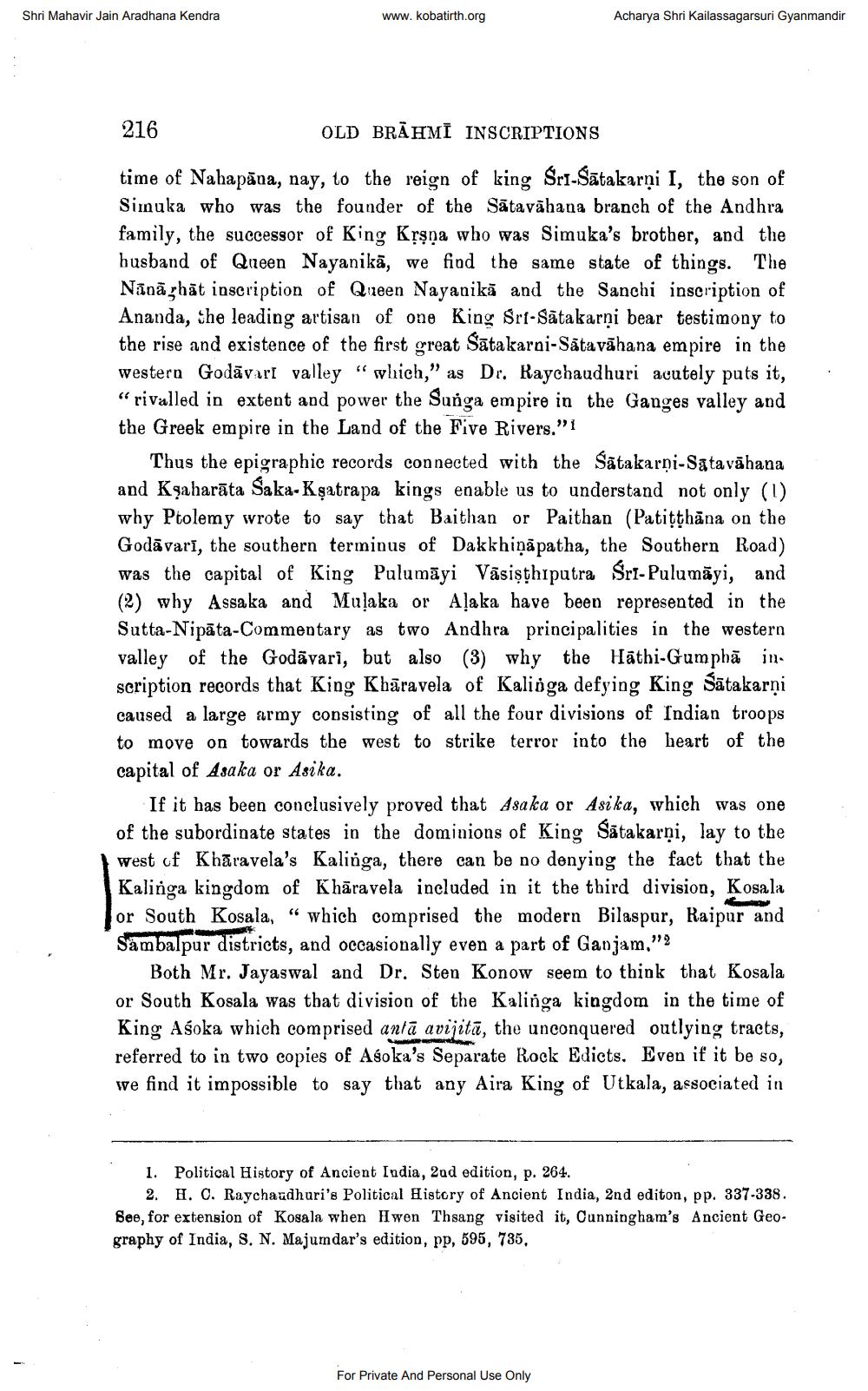________________
Shri Mahavir Jain Aradhana Kendra
www.kobatirth.org
Acharya Shri Kailassagarsuri Gyanmandir
216
OLD BRAHMĪ INSCRIPTIONS
time of Nahapāna, nay, to the reign of king Sri-Sātakarņi I, the son of Sinuka who was the founder of the Sātavāhana branch of the Andhra family, the successor of King Krşna who was Simuka's brother, and the husband of Queen Nayanikā, we find the same state of things. The Nīnāzhāt inscription of Queen Nayanikā and the Sanchi inscription of Ananda, the leading artisan of one King Sr1-Sātakarņi bear testimony to the rise and existence of the first great Šātakarni-Sātavāhana empire in the western Godāvari valley “which," as Dr. Raychaudhuri acutely puts it, “rivalled in extent and power the Sunga empire in the Ganges valley and the Greek empire in the Land of the Five Rivers."'1
Thus the epigraphic records connected with the Satakarņi-Satavāhana and Ksaharāta Saka-Kşatrapa kings enable us to understand not only (1) why Ptolemy wrote to say that Baithan or Paithan (Patitthāna on the Godāvarī, the southern terminus of Dakkhiņāpatha, the Southern Road) was the capital of King Pulumāyi Vāsişthiputra Sri-Pulumāyi, and (2) why Assaka and Mulaka or Aļaka have been represented in the Sutta-Nipāta-Commentary as two Andhra principalities in the western valley of the Godāvari, but also (3) why the Hathi-Gumphā in scription records that King Kbāravela of Kalinga defying King Sātakarņi caused a large army consisting of all the four divisions of Indian troops to move on towards the west to strike terror into the heart of the capital of Asaka or Asika.
If it has been conclusively proved that Asaka or Asika, which was one of the subordinate states in the dominions of King Satakarņi, lay to the west of Khāravela's Kalinga, there can be no denying the fact that the Kalinga kingdom of Khāravela included in it the third division, Kosala or South Kosala, “ which comprised the modern Bilaspur, Raipur and Sambalpur districts, and occasionally even a part of Ganjam."?
Both Mr. Jayaswal and Dr. Sten Konow seem to think that Kosala or South Kosala was that division of the Kalinga kingdom in the time of King Asoka which comprised antā avijitā, the unconquered outlying tracts, referred to in two copies of Asoka's Separate Rock Edicts. Even if it be so, we find it impossible to say that any Aira King of Utkala, associated in
1. Political History of Ancient India, 2nd edition, p. 264.
2. H. C. Raychaudhuri's Political History of Ancient India, 2nd editon, pp. 337-338. fee, for extension of Kosala when Hwen Thsang visited it, Cunningham's Ancient Geography of India, S. N. Majumdar's edition, pp, 595, 735,
For Private And Personal Use Only




